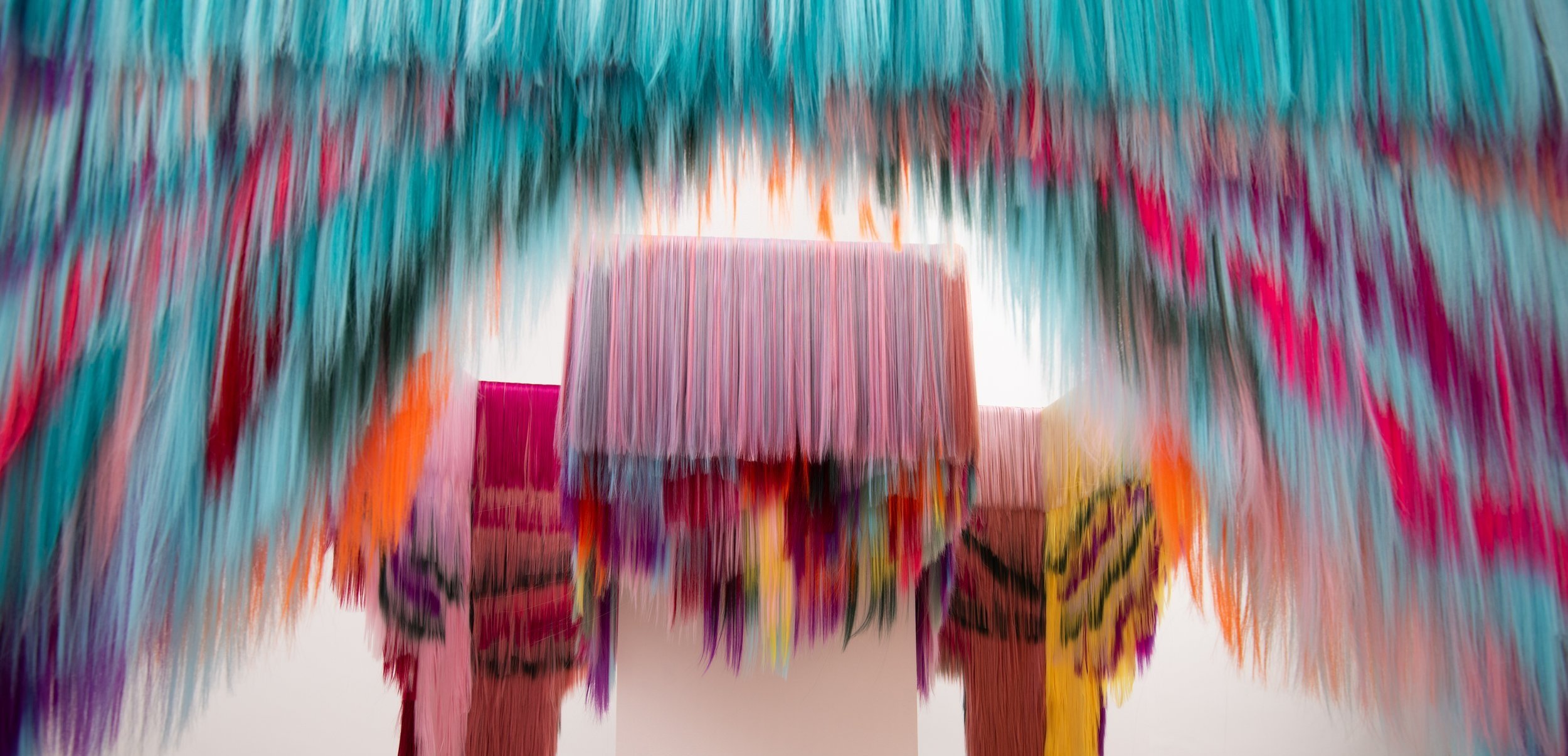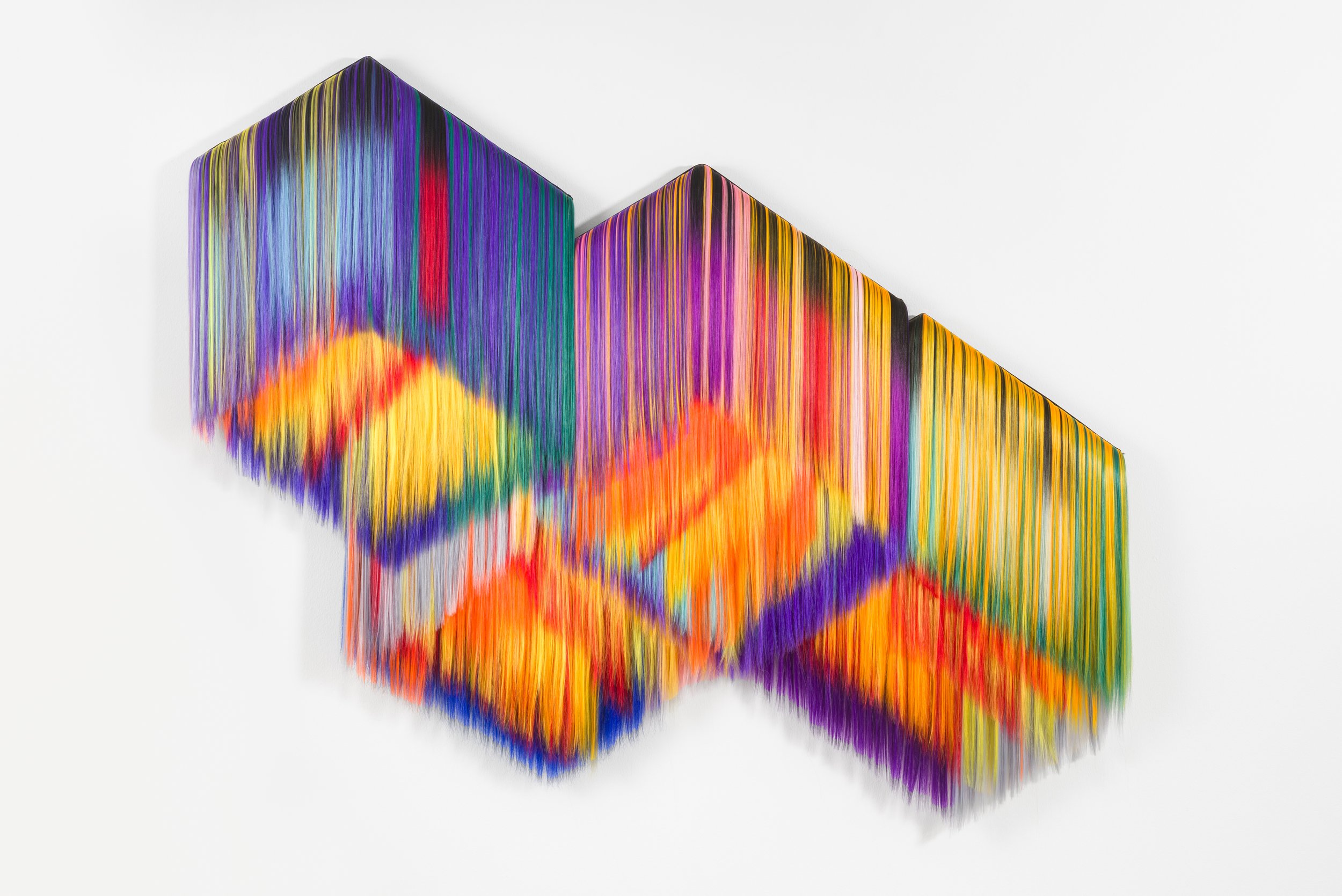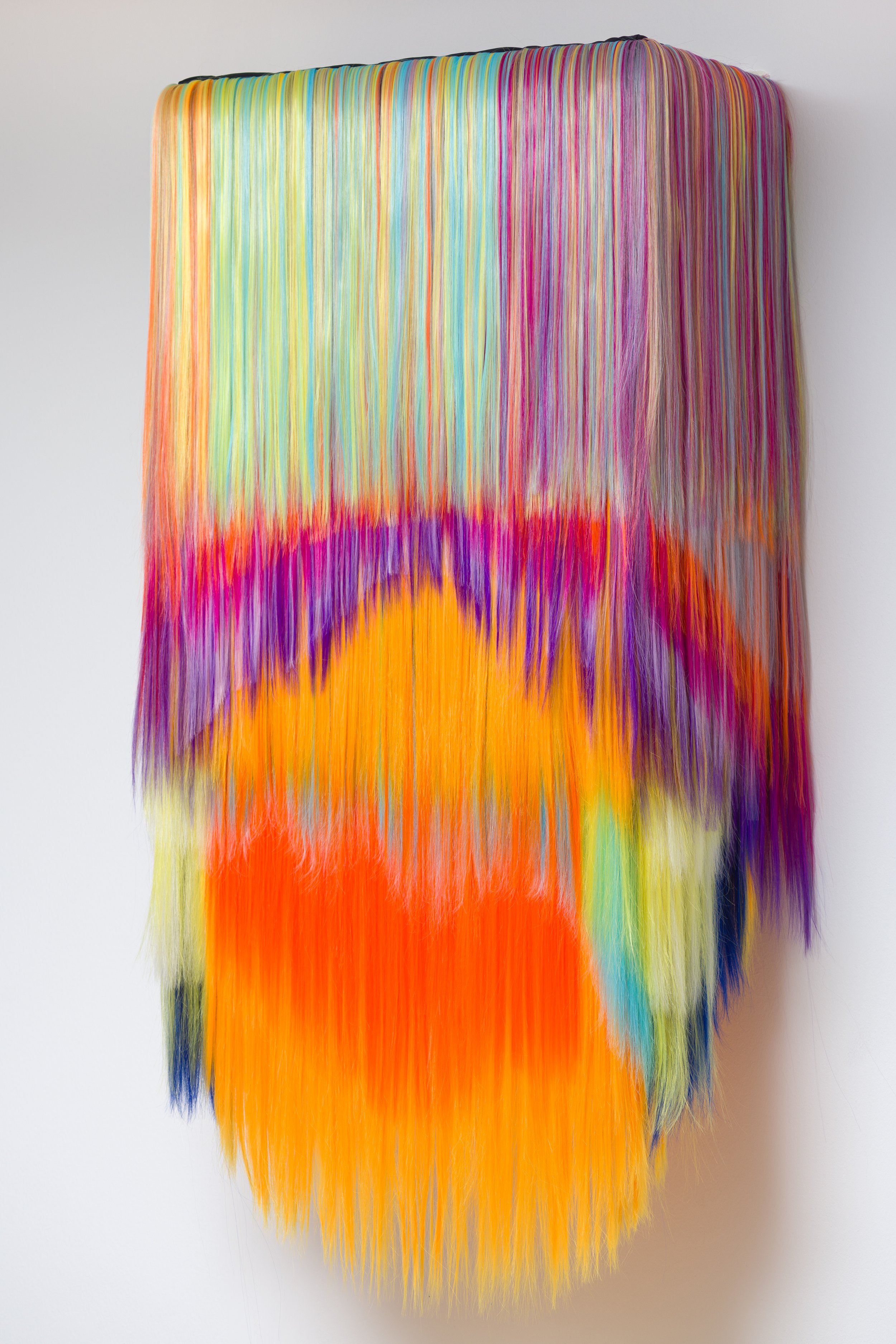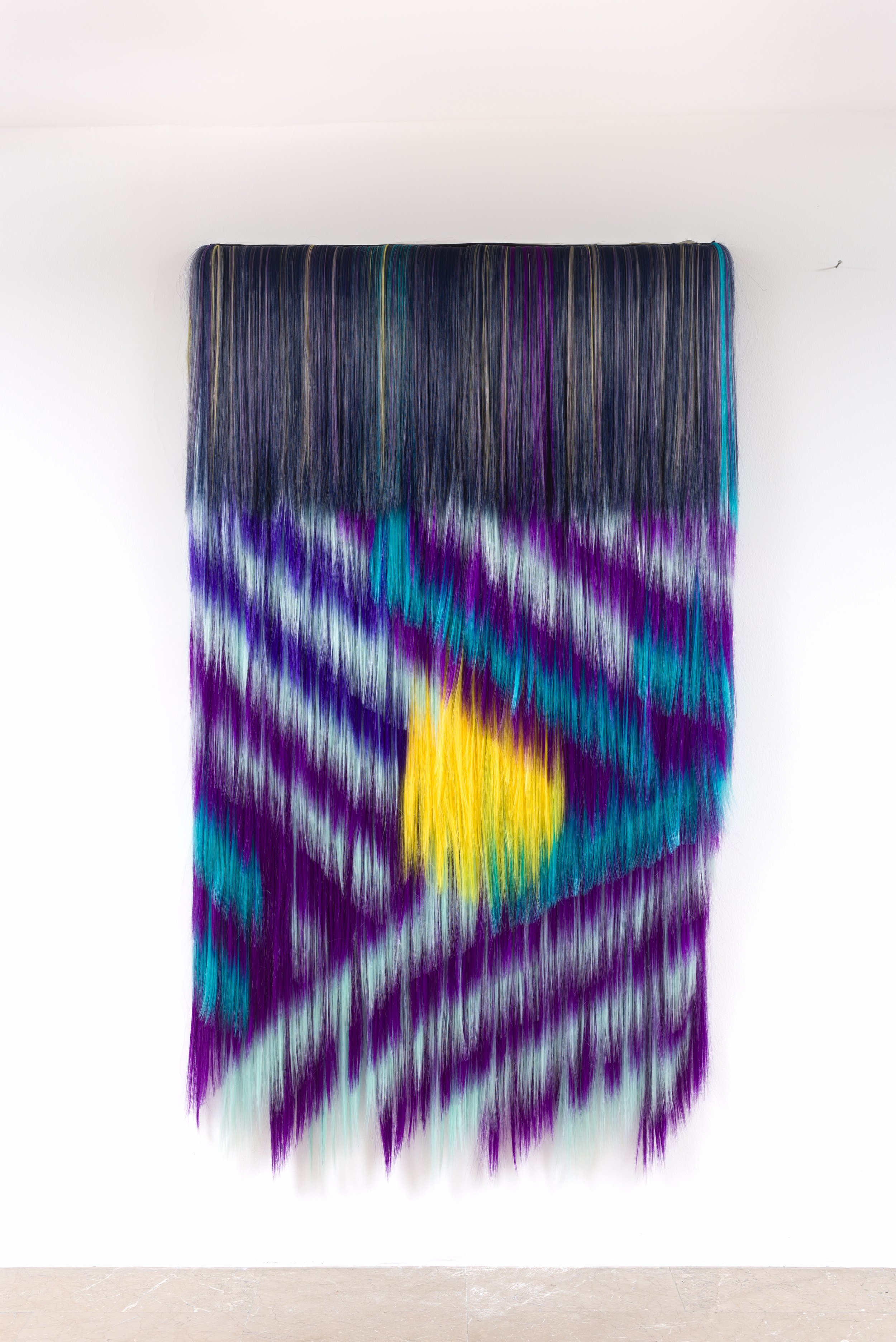
Between sleep, Between wakefulness
Hiva Alizadeh (1368) is a self-taught designer, conceptual artist and filmmaker. The path of his life and artistic activities has been such that he has reached different ways of expression and experiences. Hiva has exhibited in prestigious Iranian and international galleries, and in recent years, he has been working on a project whose output is colored volumes of synthetic hair, in different sizes and shapes.
The real essence of these works is in the appearance of colorful hair, which conceptually tends towards specific mental impressions. For example, at first glance, they are like an embodiment of femininity. This aspect is completely subjective. Symbolically, these hairs are the place of physical strength and a sign of the inner power of gods, goddesses and humans and refer to the drive of life, creative thought and inspiring forces. At this level, both political and erotic readings are possible. Such impressions are mostly conveyed to us through the eyes (seeing colors) and through the senses (touching).
Because of the pre-designed epistemic patterns that we unconsciously live, we are used to understanding all kinds of observations, subjects and the world around us in specific semantic frameworks. Such an understanding is called "fundamental unity of meaning" and shapes our everyday knowledge of things. Contemporary art is no exception to this rule.
David Hume believed that all things that we perceive with a recognizable meaning are in fact a combination of simple ideas. These ideas are the result of certain qualities and are tightly connected by a mechanism called "association principles".
For a better understanding of the relationship between mental images and the perception we find of Hiva's works and objects, a more detailed reflection on the function of association principles will clarify the issue. Hume emphasized that an "object" is not a collection of simple qualities or simple ideas that, as our imagination puts them together, seem to exist and signify in some discernible sense or "fundamental unity." According to this empiricist philosopher, we understand specific or subjective meanings through the associative principles of things. He stressed that one should not forget that the fundamental unity assumed in the meanings is ultimately unknowable.
The principles of association in a more detailed way are the effect of the powers of sensitivity, understanding and imagination on our minds. All these form a conceptual force and by this means our mind is guided towards specific meanings. For example, in Hiva's case, colored synthetic hair is a reminder of femininity, toughness, colorful landscapes, freedom of imagination and, behind all this, dreaming.
In Hiva's works, it is the imagination that brings an object like colored hair to specific meanings easily, quickly and with little mental effort. His works are unified in our mind from this path and we will have perceptions that ultimately form the meaning of the work of art we see.
The question that can be asked is whether the meanings that we take from Hiva's works are only derived from the effects of association principles or are they rooted in his rethinking and innovations towards the work of art?
The views of contemporary philosophy, as well as the scope of our knowledge today, do not allow us to easily accept that behind all these colorful and eye-catching objects, there is a fundamental unity of meaning such as femininity or political ideas. It is precisely for this reason that Hiva's works have a deceptive spirit and acquire an entertaining nature. As objective as his works are, they are mysterious, highly multifaceted and highly interpretable. Facing these works, the material and the searching mind of the artist are two issues that occupy the mind of the audience.
Hiva Alizadeh's show at the Lajevardi Foundation is a selection of designs, hair objects and a large-scale interactive work. His colorful objects change our perception and the way we communicate with the environment, and the deep but subtle manipulation of the mechanism of sensory perception is their main specialty. They can be seen as a chain of games with the audience's imagination.
Before trying to convey direct and specific meanings, Hiva's colored volumes show the instability of human mental imaginations and their artificiality. They act like media that seek to communicate fully with their audience. The desire we feel to touch and stare at them is rooted in the abundant human desire to communicate with our fellow human beings. It is where charm, seduction and humor become prominent features in Hiva's works, flow in them and prevent the object from completely conforming to predetermined mentalities.
Hiva seeks to manipulate emotions, change our inner perceptions and reach more detailed qualities that cannot necessarily be expressed, and it is not the artist's priority to address them in detail. Of course, these works can have no other meaning than making strange objects and providing beautiful experiences full of emotional forces. Despite this, their approach to meaning and especially the way they communicate - a combination of touching and staring - is a turning point that makes their interpretability possible to infinity.
Hiva's works sometimes resemble things as if we know them. Sometimes they turn into completely unknown forms. All in all, they reveal the complex functioning of our mental perception and subject mental models and conventional semantic frameworks that aim to accurately match objects with mental impressions to question, change and change. In this sense, they bring into play the classical principle of "association of meanings" and "complete matching of subject with object".
Hiva's intellectual project is to create a contemporary philosophical knowledge in which the meaning of the object can be changed according to the content of the audience's mind. Part of the eternal novelty of this artist's works lies in having such a vision, and for this reason, he can avoid repetition and keep the audience entertained with endless interpretations.
Hiva Alizadeh's works transform our usual understanding of the world around us and, as a creative and continuous effort, provide visual and emotional experiences which do not exist in our life a priori.
Rozbeh Amin
Lajevardi Foundation, July 2024




